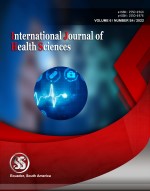A research on how an effective communicational behaviour accomplishes organisational objectives in private business organisations (with special reference to thrissur district)
Keywords:
Communication, Pandemic, workplaceAbstract
The process of sharing knowledge and common understanding from one person to another is known as communication. Communication is essential in the workplace for developing and sustaining good working relationships. Ever since the pandemic situation has a arrived it has a greater impact on each and every sequence of a business organization so according to that certain variations can be identified in the communication style of an organization so keeping that in mind the ways to improve the effectiveness in communication along with identifying the barriers of the same and suggesting possible and reliable solution for better communication network is discussed in this study to improve communication efficacy. This study is conducted on the basis of 50 responses collected through online survey method and in person method along with some percentage of secondary sources of data collection. Factor analysis, Chi-square and ANOVA are used to analyses and interpret the data.
Downloads
References
Pallant, J., SPSS survival manual: a step by step guide to data analysis using SPSS, Open University Press/ Mc Graw-Hill, Maidenhead, 2010
MacCallum, R.C., Widaman, K. F., Zhang, S. and Hong, S. “Sample size in factor analysis,” Psychological Methods, 4(1), 84-99. 1999
Lavrakas, P.J., Encyclopedia of survey research methods. SAGE Publications, Thousand Oaks, 2008.
Field, A., Discovering statistics using SPSS (3rd ed.), SAGE, London, 2009.
Verma, J., Data analysis in management with SPSS software, Springer, India, 2013.
Mariyappan, N., & Sangeetha, G. (2022). Usage of digital marketing and medical mobile application in online medical consulting services during pandemic with reference to consumers in Chennai city. International Journal of Health Sciences, 6(S3), 7254–7262. https://doi.org/10.53730/ijhs.v6nS3.7740
Cattel, R.B., Factor analysis, Greenwood Press, Westport, CT, 1973.
Aubrey A. No-Touch Greetings Take Off: People Are Getting Creative about Saying ‘Hi'. National Public Radio (2020). Available online at: https://www.npr.org/sections/health-shots/2020/03/15/814540484/no-touch-greetings- take-off-people-are-getting-creative-about-saying-hi (accessed July 6, 2020).
(PDF) COVID-19 and the reorientation of communication towards CSR. Available from: https://www.researchgate.net/publication/355115838_COVID- 19_and_the_reorientation_of_communication_towards_CSR [accessed Mar 22 2022].
Published
How to Cite
Issue
Section
Copyright (c) 2022 International journal of health sciences

This work is licensed under a Creative Commons Attribution-NonCommercial-NoDerivatives 4.0 International License.
Articles published in the International Journal of Health Sciences (IJHS) are available under Creative Commons Attribution Non-Commercial No Derivatives Licence (CC BY-NC-ND 4.0). Authors retain copyright in their work and grant IJHS right of first publication under CC BY-NC-ND 4.0. Users have the right to read, download, copy, distribute, print, search, or link to the full texts of articles in this journal, and to use them for any other lawful purpose.
Articles published in IJHS can be copied, communicated and shared in their published form for non-commercial purposes provided full attribution is given to the author and the journal. Authors are able to enter into separate, additional contractual arrangements for the non-exclusive distribution of the journal's published version of the work (e.g., post it to an institutional repository or publish it in a book), with an acknowledgment of its initial publication in this journal.
This copyright notice applies to articles published in IJHS volumes 4 onwards. Please read about the copyright notices for previous volumes under Journal History.
















